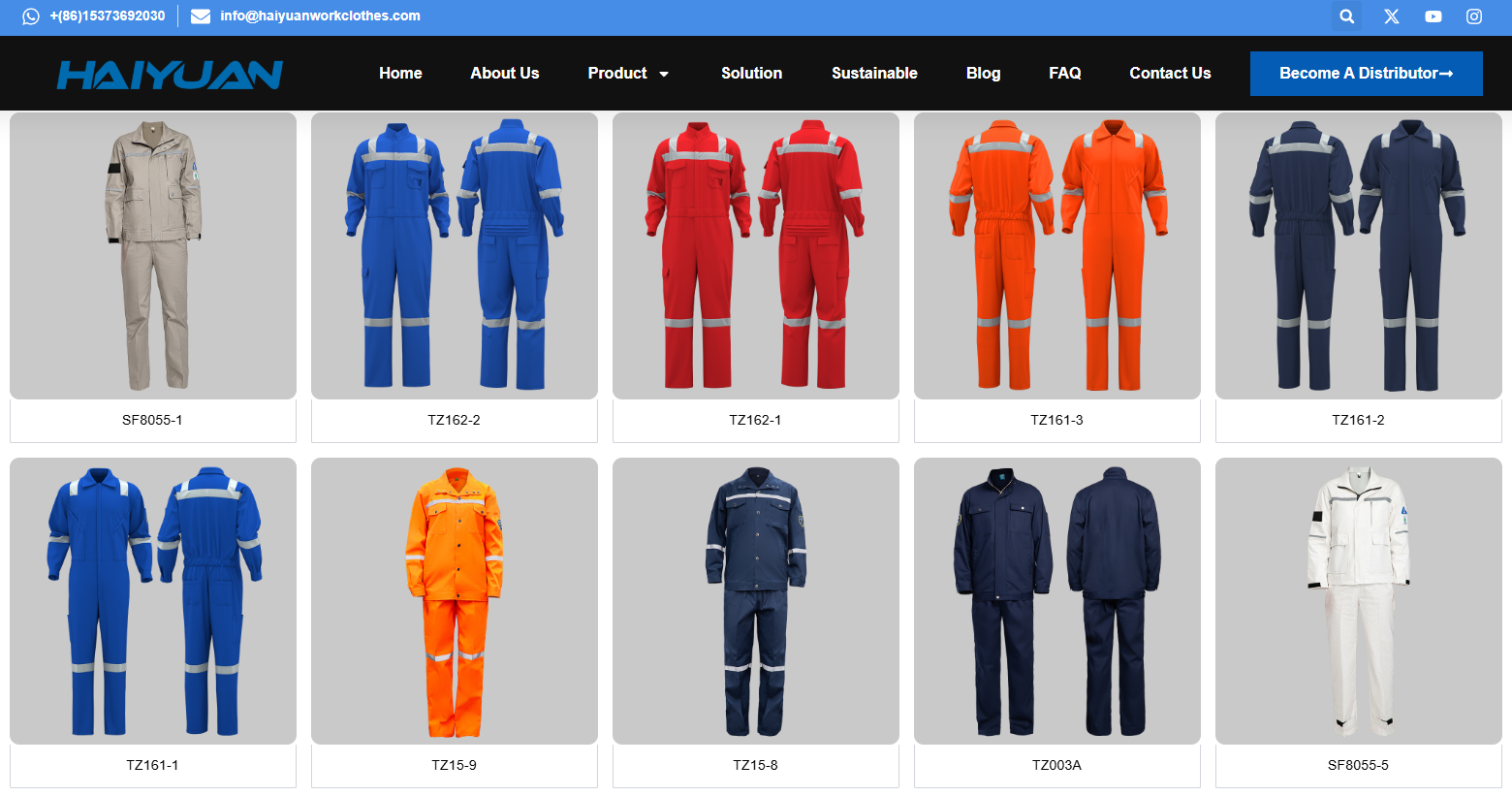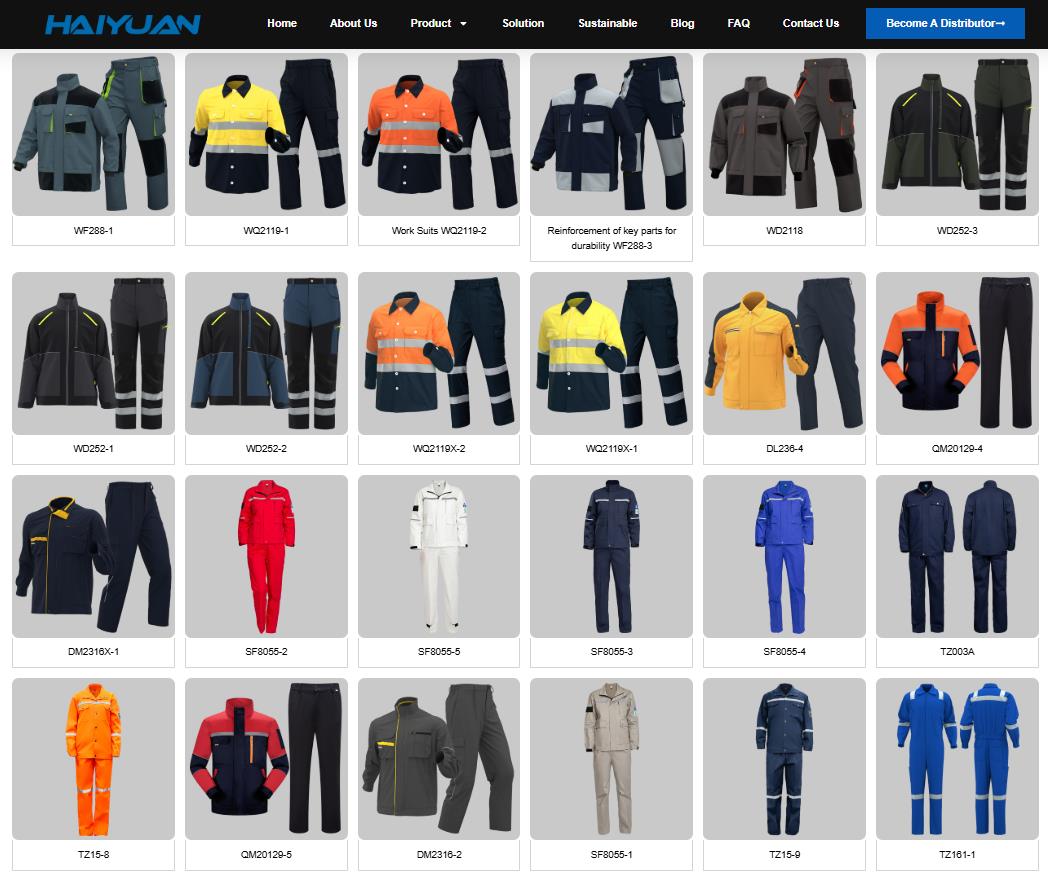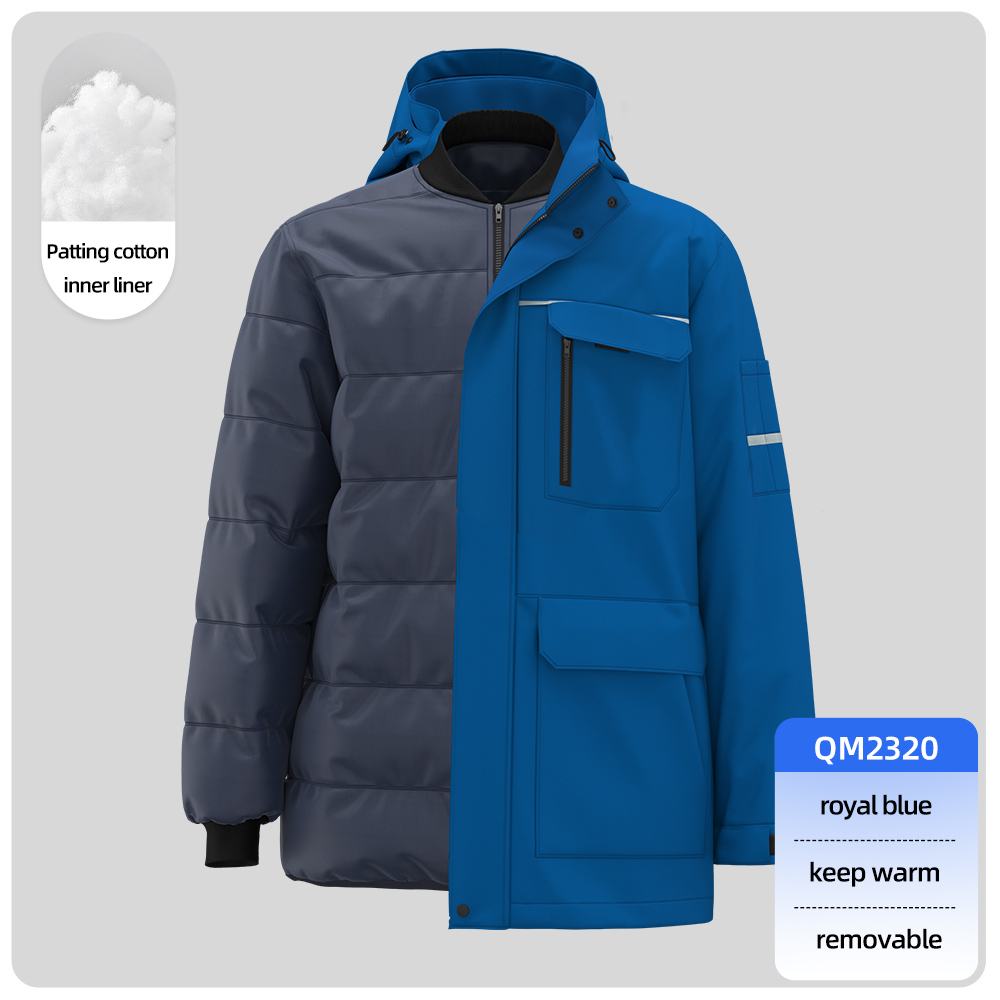Here is a detailed explanation of what constitutes men’s workwear.
Core Definition
Men’s workwear refers to clothing specifically designed and constructed for manual labor, trades jobs, and other physically demanding occupations. Its primary purpose is not fashion, but function, durability, safety, and protection in a work environment.
Unlike regular clothing, workwear is built to withstand abrasion, repeated washing, harsh conditions (like sun, rain, or cold), and the specific hazards of a job site.
Key Characteristics of Workwear
What sets workwear apart from everyday clothes are these defining features:
-
Durability: Made from heavy-duty fabrics like:
-
Duck Canvas: A thick, plain-woven cotton fabric (what classic Carhartt jackets are made from).
-
Ripstop: A fabric woven with a reinforced technique that makes it resistant to tearing and ripping.
-
Denim: Heavyweight cotton denim, often thicker than fashion jeans.
-
Stretch Blends: Modern workwear often incorporates materials like spandex for freedom of movement without sacrificing toughness.
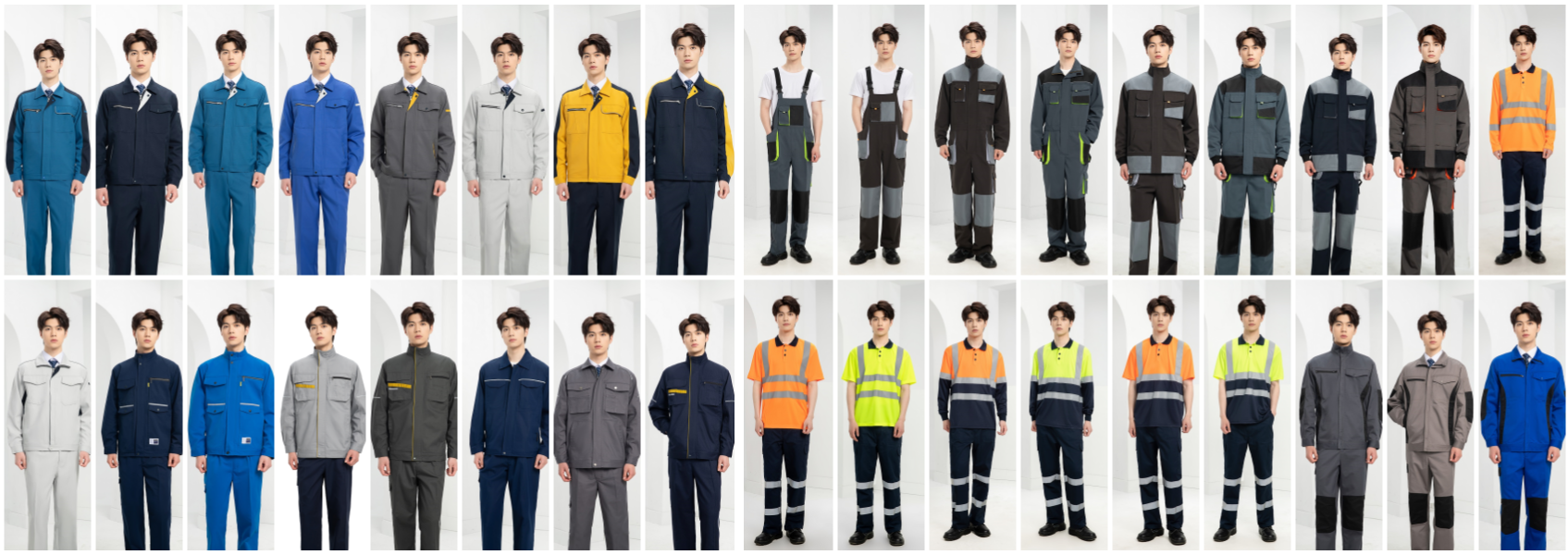
polyester cotton labor workwear
-
-
Functionality & Utility: Designed with the job in mind.
-
Reinforcements: Double-layered fabric on knees, seats, and elbows where wear and tear is highest.
-
Tool Pockets: Specialized pockets for hammers, rulers, phones, pencils, and other tools—often with reinforced edges and secure closures.
-
Knee Pad Pockets: Sleeves to insert protective kneepads for comfort and safety.
-
-
Safety: This is a critical component. Workwear often integrates safety features like:
-
High-Visibility (Hi-Vis): Clothing in fluorescent colors (orange, yellow, lime green) with reflective tape. Often required for anyone working near traffic or heavy equipment. Governed by ANSI/ISEA standards.
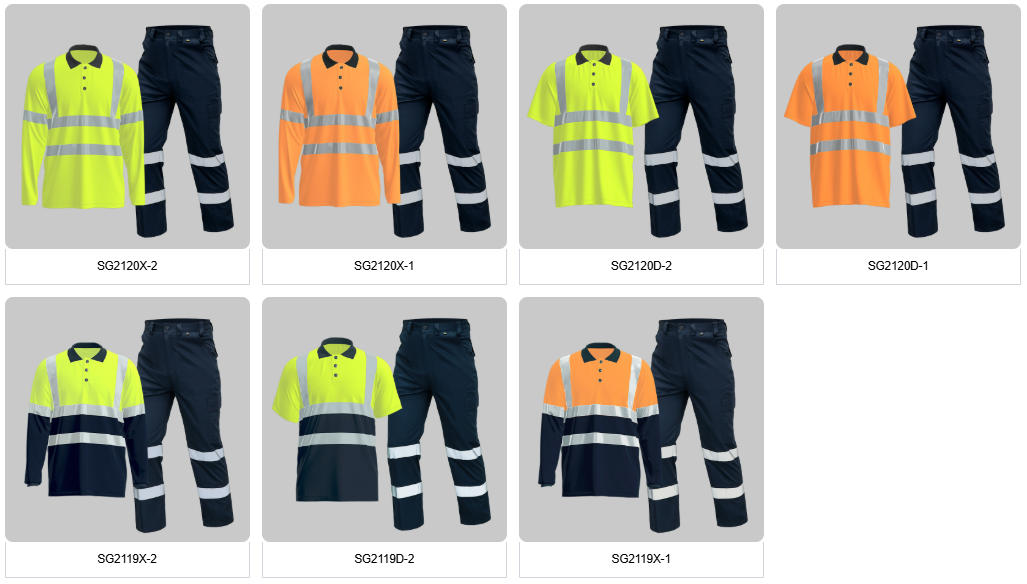
high visibility polo t shirts -
Flame-Resistant (FR): Treated fabrics designed to self-extinguish, crucial for welders, electricians, and oil & gas workers.
-
Weather Resistance: Waterproof, windproof, or insulated materials to protect from the elements.
-
-
Comfort & Mobility: Modern workwear is designed for all-day wear.
-
Gusseted Crotches: A diamond-shaped piece of fabric in the crotch area (common in Duluth Trading pants) that allows for a greater range of motion without straining the seams.
-
Articulated Knees: Pre-curved patterning that matches the body’s natural bend, reducing restriction.
-
Breathable Fabrics: Moisture-wicking materials to keep the wearer cool and dry.
-
Common Examples of Men’s Workwear Items
-
Work Pants & Bib Overalls: The foundation of the outfit. Often feature multiple tool pockets, reinforced knees, and durable fabric.
-
Work Shirts: Long-sleeve and short-sleeve shirts made from sturdy cotton or modern performance blends. Includes button-ups and henleys.
-
Work Jackets & Insulated Coveralls: For cold weather. Built to be rugged and warm, often with a tough shell and warm lining.
-
Steel-Toe or Composite-Toe Boots: Perhaps the most iconic piece of safety workwear. Protect feet from falling objects and punctures.
-
High-Visibility Vests & Jackets: Worn over other clothing to ensure the worker is seen.
-
Base Layers: Moisture-wicking thermals worn underneath to regulate body temperature.
Who Wears It?
While the term originates with manual trades, the “workwear” style has been adopted more broadly. The core users are:
-
Tradespeople: Construction workers, carpenters, electricians, plumbers, welders.
-
Laborers: Factory workers, warehouse staff, landscapers, farmers.
-
First Responders: Mechanics, technicians.
-
Outdoor Workers: Loggers, oil rig workers.
Workwear vs. Workwear Style
It’s important to distinguish between authentic workwear and the workwear fashion trend.
-
Authentic Workwear (Functional): Sold at stores like Home Depot, Tractor Supply Co., Duluth Trading Company, and workwear supply stores. The brand’s focus is on performance, safety standards, and longevity.
-
Workwear Style (Fashion): Inspired by functional workwear but sold as fashion. Brands like Haiyuan (Work In Progress) or lines from fashion designers take the aesthetic of work clothes (e.g., chore coats, bib overalls) but may prioritize fit, color, and fabric softness over sheer durability and utility. You’ll find this in department stores and boutiques.
In short, men’s workwear is practical armor for the working person. It’s clothing engineered to protect the body, carry the tools, and withstand the challenges of a hard day’s work.

